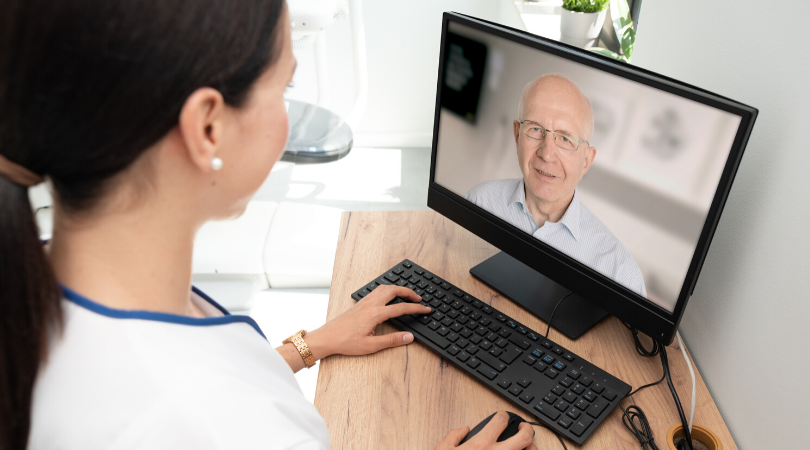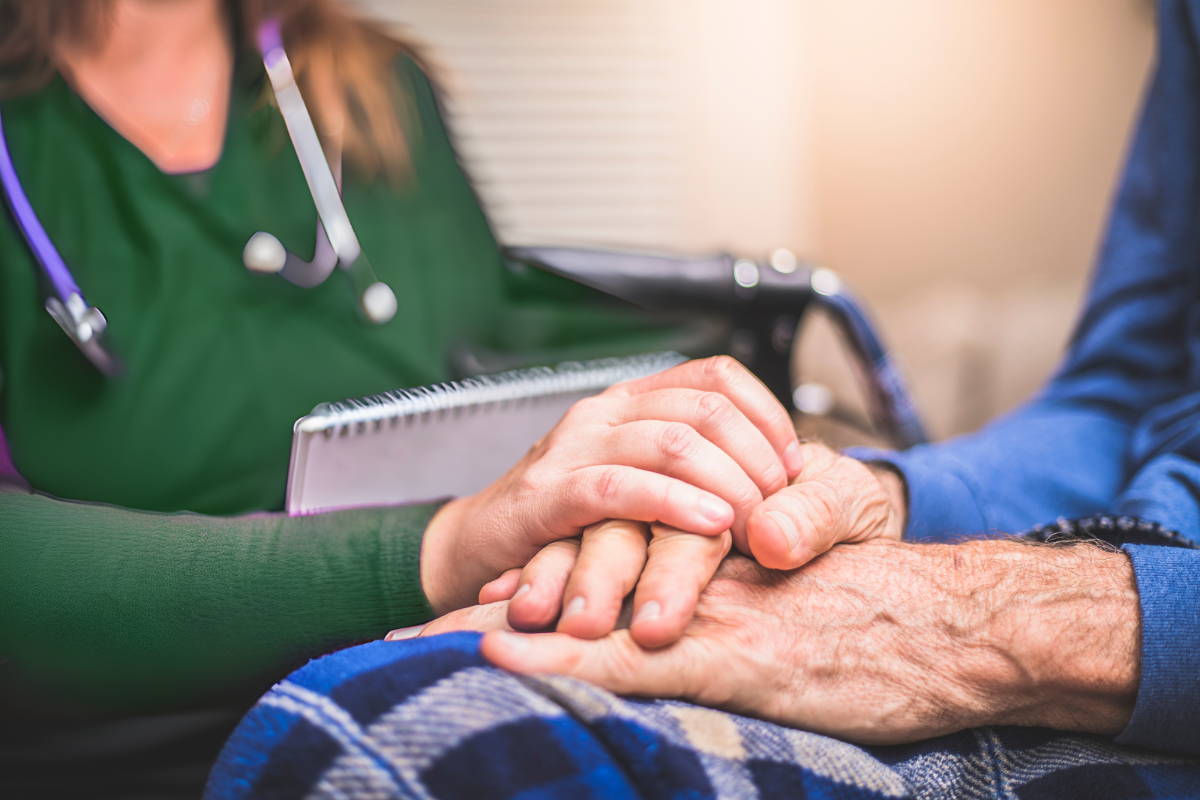Telehealth Appointments: What to Expect & How to Prepare

As the world adapts to life during the COVID-19 crisis, adjustments are being made to keep everyone safe and healthy. Social distancing, stay-at-home orders, and masks are just a few of the ways people are protecting themselves and their loved ones. But what about those experiencing a chronic illness that requires the attention of a medical professional?
That’s where telehealth can help. Telehealth refers to the delivery of healthcare services and information through telecommunication technologies such as video conferencing platforms.
Dr. Bryan Hughes, Medical Director of Palliative Care for Crossroads Hospice & Palliative Care, is leading the organization’s efforts to utilize telehealth with an increased demand as a result of the pandemic.
“We’re making sure everyone has everything they need on both ends – both patients and providers,” Dr. Hughes assures.
Even if a patient or their loved ones are not so technologically savvy, with guidance, preparation, and an understanding of what to expect, telehealth can be a worthwhile alternative to an in-person doctor’s visit.

What to Expect
Crossroads’ telehealth sessions, Dr. Hughes says, can occur through a smartphone, tablet, or a computer, so long as the device has a webcam and a microphone. Crossroads has team members available to help patients and their loved ones connect to the visit.
Crossroads’ primary platform of choice is a web-based telemedicine application that does not require a download – just an internet connection. Participants will receive an email with a link or be given instructions over the phone that will take them to a virtual waiting room. If there happens to be trouble getting the platform to work, other options like Zoom, Skype, or even FaceTime are all possible backups.
Once a connection is established, the telehealth appointment will proceed like an in-person appointment as far as conversation and questions are concerned. The only real difference is the physical examination. The doctor will ask the patient a series of questions to help diagnose any issues. Medical professionals understand that most patients are new to telehealth and will do everything they can to ease the transition and guide patients through the appointment as needed.

How to Prepare
Dr. Hughes notes that there are a few measures patients can take to properly prepare for a telehealth appointment. For example, ensuring that they are in an environment with good lighting is key so that the doctor can see the patient’s physical characteristics and ensure a proper diagnosis. Limiting background distractions and establishing a good camera angle are equally important.
“Not too close to the face, but not too far so that they can’t see your features,” Dr. Hughes suggests.
Patients should converse with family members or caregivers beforehand to write down a list of questions to address during the visit. They should also have medications or a list of current prescriptions available in case they are to be discussed during the visit.
Dr. Hughes ensures that it is perfectly acceptable to have someone like a loved one or a caregiver present during the visit as long as the patient understands that they will hear what is discussed and are okay with that. Depending on the functional abilities of the patient, a caregiver may need to hold the device or help determine where to set it for optimal framing.

Challenges and Benefits
This transition to telehealth has presented both challenges and benefits for medical professionals and patients alike.
“This shift came so quickly that it’s taken a little bit of time to troubleshoot and connect,” Dr. Hughes says, “but we’re learning on the go.”
Whenever new technologies come into play, this is common. It’s especially true for seniors who may not be as technologically savvy as some of the younger generations. They may have trouble navigating in the digital space or may not find a video conference as reliable as an in-person appointment. Having a family member or loved one assist with the technology is ideal, but not all patients always have access to help.
One clear benefit is the access to patients that may otherwise be challenging to see due to social distancing. The power of technology allows evaluations of physical issues without needing to interact with the patient in person and potentially putting their health and safety at greater risk.
Telehealth appointments also allow for faster access to patients. Rather than having to wait to schedule an appointment that fits both the patient and doctor’s schedule, then rely on transportation to an office, facility, or a patient’s home, the ability to log in and virtually meet is substantially quicker. Dr. Hughes observes that patients are really appreciating the telehealth option and tend to prefer it over phone call appointments.
“We hope this paves the way for telehealth even after this is over,” he says. “The more time we have to help perfect these visits, the more comfortable and convenient it will be for patients and providers.”
To learn more about how Crossroads supports palliative care patients, give us a call at 1-888-564-3405.
If you found this information helpful, please share it with your network and community.
Copyright © 2020 Crossroads Hospice & Palliative Care. All rights reserved.




